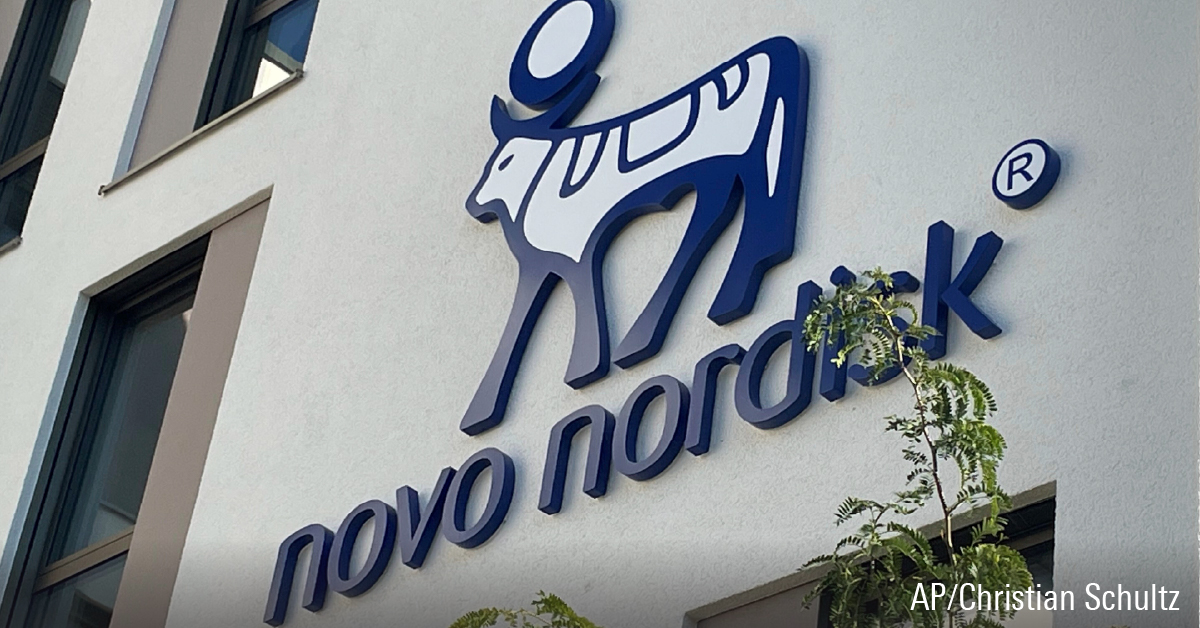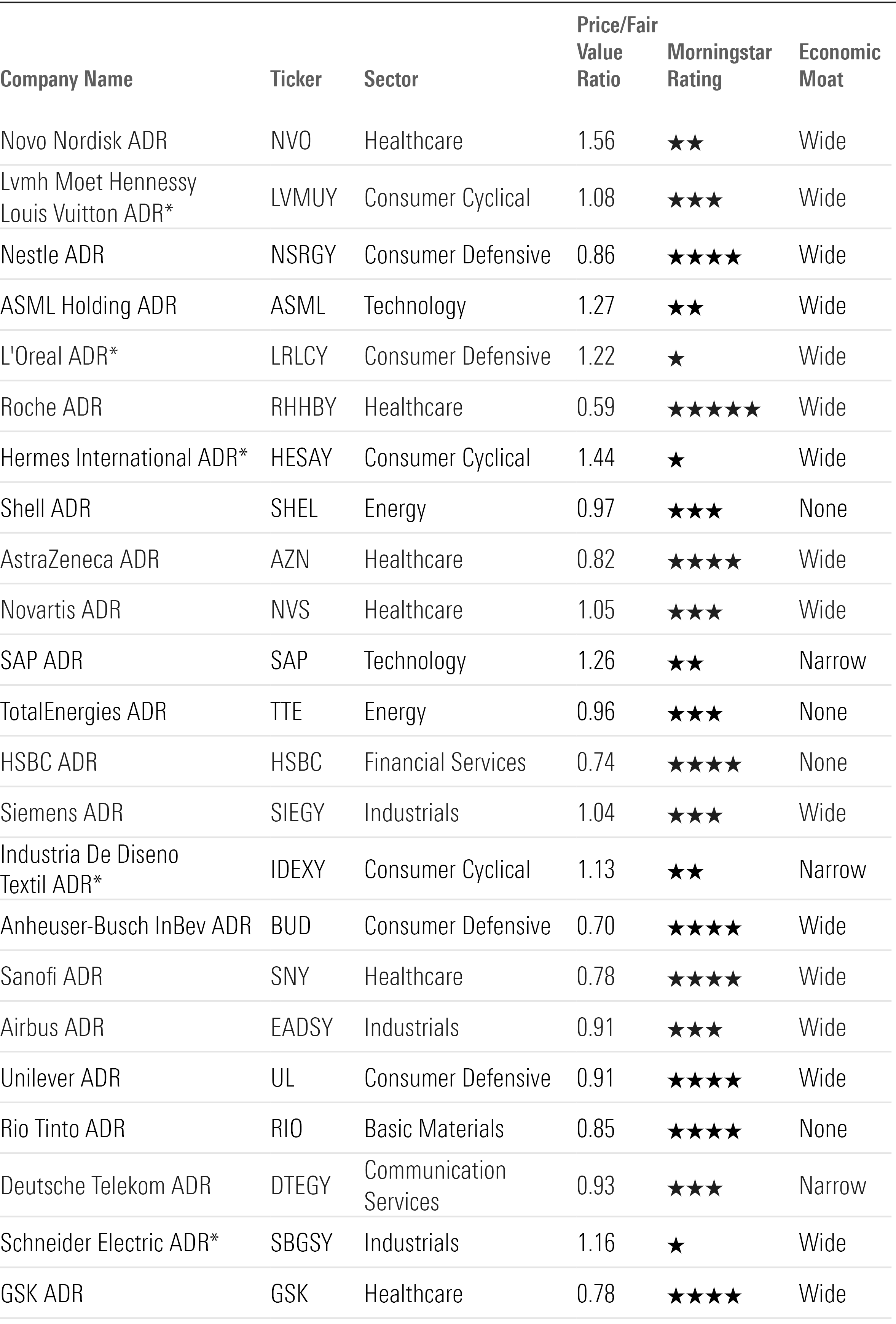Magnificent Seven vs. the ‘Granolas’: How Does Europe’s Version Stack Up?
‘Granolas’ stocks are profitable, diversified, cheap—and posting big returns.

The US stock market has its “Magnificent Seven.” Europe has the “Granolas.” First identified by Goldman Sachs in 2020, these 11 stocks reflect a broader segment of the European stock market than the technology-heavy Magnificent Seven does in the US.
Besides being among the continent’s most valuable stocks, these companies share solid earnings growth, low volatility, high and stable margins, strong balance sheets, and durable dividends. The 11 stocks of Granolas are:
- GSK GSK
- Roche RHHBY
- ASML ASML
- Nestle NSRGY
- Novartis NVS
- Novo Nordisk NVO
- L’Oreal LRLCY
- LVMH Moët Hennessy Louis Vuitton LVMUY
- AstraZeneca AZN
- SAP SAP
- Sanofi SNY
In their April 2020 report, Goldman Sachs strategists wrote: “In the US, tech is still likely to remain the long-term winner. In Europe, it’s more likely to be a combination of structurally strong and/or stable sectors: healthcare, consumer staples, and tech ... They might not ALL do well, but they generally have some growth and/or stability in earnings and [dividend yields] in the 2.0%-2.5% range.”
As is the case with the Magnificent Seven in the US, the Granolas have dominated their market. Goldman’s analysts noted on Feb. 12 that they accounted for 60% of all gains in European stocks over the past year. In fact, “From a global point of view, the Granolas have even outperformed the so-called Magnificent 7 over the past two years ... They are a large part of the reason European equities have performed well despite lackluster domestic GDP.”
Starting from Goldman’s research and going back to 2021, we looked at the most valuable companies in the Morningstar Europe Index, along with valuation and fundamentals data from other databases, to understand the underlying drivers of the Granolas stocks’ outperformance.
The Magnificent Seven vs. the Granolas
There are no companies with trillion-dollar market values on the list of the top European stocks, while six of the Magnificent Seven are valued at that level: Nvidia NVDA, Meta Platforms META, Apple AAPL, Amazon.com AMZN, Microsoft MSFT, and Alphabet GOOGL/GOOG. The exception is Tesla TSLA, which is worth roughly $630 billion.
The most valuable company in Europe is Novo Nordisk, the Danish pharmaceutical firm whose obesity drug Ozempic has helped propel its earnings to new highs. Novo is valued at $555 billion. (For a comprehensive look at Europe’s largest stocks, see the table at the bottom of this story.)
The second big difference between the Magnificent Seven and Granolas is their diversity of sectors. The Magnificent Seven are all tech-driven, though Morningstar classifies just three (Microsoft, Apple, and Nvidia) as tech stocks. Amazon and Tesla are consumer cyclical stocks, while Alphabet and Meta are part of the communications services sector.
The Granolas represent a much broader cross-section of the economy, with names from the healthcare, consumer defensive, and consumer cyclical sectors. ASML, a global supplier of semiconductor production equipment, is the only tech stock. Multiple Granolas companies are global leaders in their respective fields—Nestle for food, LVMH for luxury, L’Oreal for cosmetics, and Novo for diabetes. The list also has some of the largest pharmaceutical companies in the world. Besides Novo, there’s Roche, Novartis, Sanofi, AstraZeneca, and GSK.
Granolas Performance
Since 2021, the Granolas’ average return has been very solid. On a total return basis in euros, an equally weighted portfolio of the companies would have doubled in value, with a cumulative total return of 103% as of Feb. 19, compared with a cumulative total return of 128% for their US counterparts.
Top US and European Stocks vs. the Stoxx 600 Index
We looked at historical returns on equity as a measure of profitability. This measure is far from perfect, particularly for companies whose profitability is driven mostly by intangible assets. Still, it gives an idea of how profitable the top stocks are in both Europe and the US.
Return on Equity for Top US and European Stocks
Both groups have seen their returns on equity improve over the last few years. And despite being more volatile, the Magnificent Seven have been significantly more profitable than Granolas.
European Stocks at a Discount
We also looked at traditional valuation ratios using consensus data to assess whether the higher profitability of the Magnificent Seven is justified and if they trade at a premium to their European counterparts. The chart below shows that thanks to increasing returns on equity, valuation ratios have been declining over the last few years. Despite this, both sets of stocks trade at significant premiums to their respective markets.
The Granolas stocks currently trade at 31 times their expected earnings for the next 12 months. In comparison, the European market trades at 13-14 times its forecast earnings. In the US, the Magnificent Seven currently trades at 34 times their earnings (at a premium to the US market, which trades at about 20 times earnings).
The historical premium of the Magnificent Seven to their European counterparts makes sense, considering their higher return on equity. The European list, which is equally weighted, is influenced by the very high valuations of specific companies, especially ASML and Hermès International, which trade at price/earnings multiples of about 43 and 49 times, respectively.
Looking at the Granolas’ valuations compared with their Morningstar fair value estimates, five are undervalued. US-listed shares of GSK, Nestle, AstraZeneca, Sanofi, and Roche are rated 4 stars, while Roche is significantly undervalued as a 5-star stock. LVMH and Novartis are deemed fairly valued as 3-star stocks.
Among the Magnificent Seven, only Alphabet is considered undervalued, with a 4-star rating. Microsoft, Nvidia, Amazon, and Tesla are fairly valued.
Price/Earnings Ratios for Top European and US Stocks
Overall, Granolas stocks have provided solid returns to investors, not far from their US counterparts. The subset is on average smaller but more diversified than the Magnificent Seven. Their high profitability justifies their valuation premiums to the rest of the market, but the fact that the US cohort is even more profitable explains why the European version trades at a discount to it.
Europe's Largest Stocks

The author or authors do not own shares in any securities mentioned in this article. Find out about Morningstar’s editorial policies.


/cloudfront-us-east-1.images.arcpublishing.com/morningstar/ECVXZPYGAJEWHOXQMUK6RKDJOM.jpg)
/cloudfront-us-east-1.images.arcpublishing.com/morningstar/KOTZFI3SBBGOVJJVPI7NWAPW4E.jpg)
/cloudfront-us-east-1.images.arcpublishing.com/morningstar/V33GR4AWKNF5XACS3HZ356QWCM.jpg)